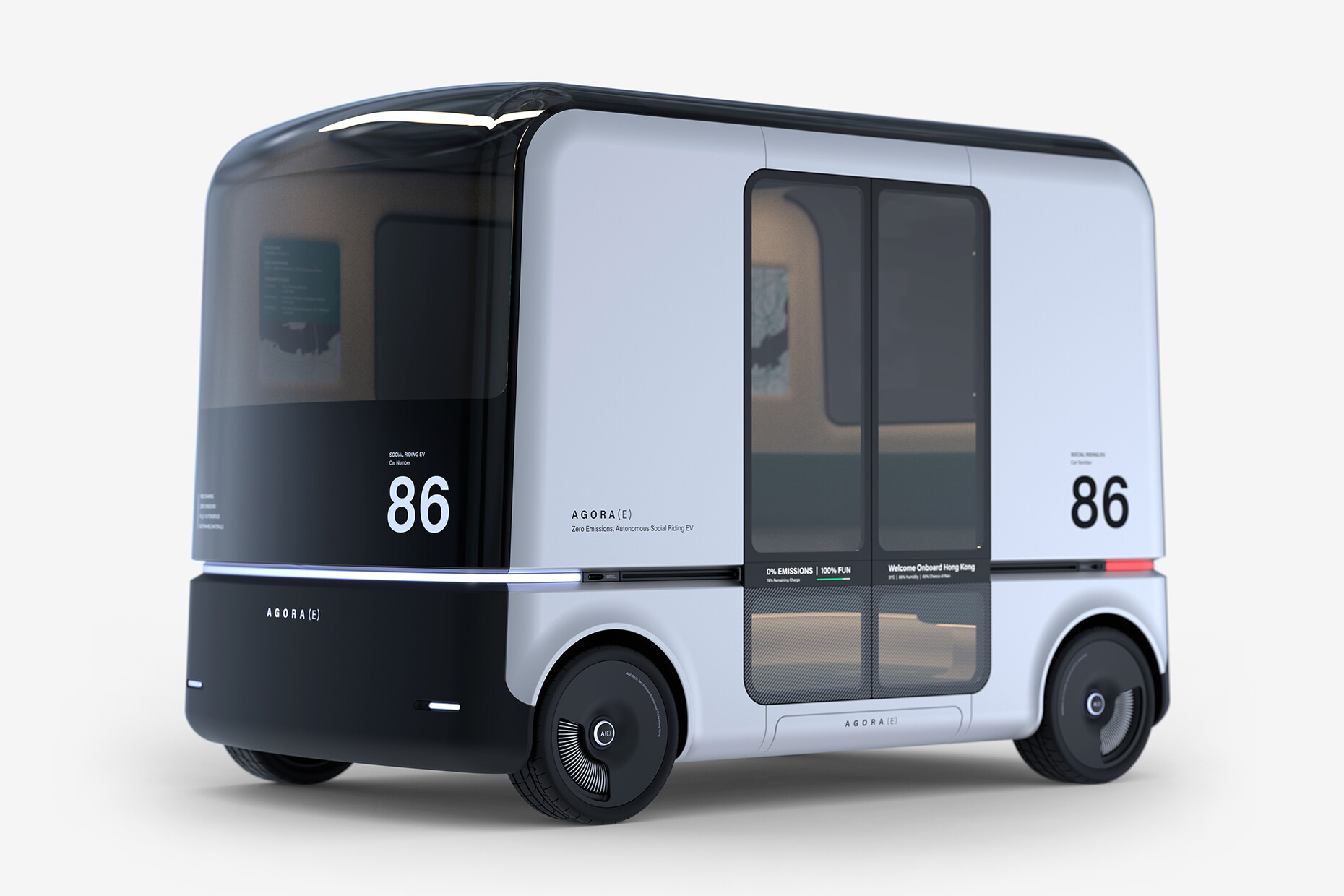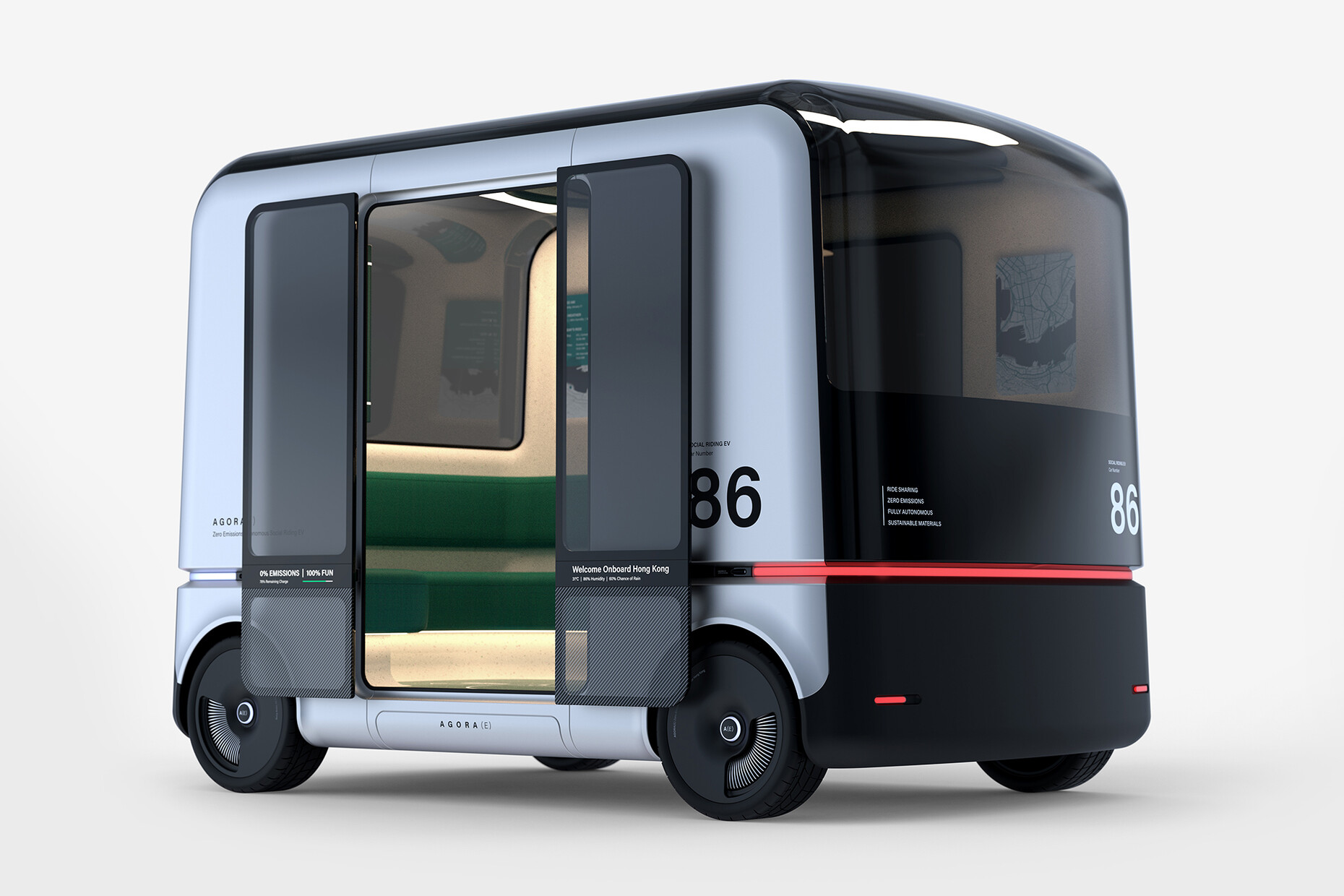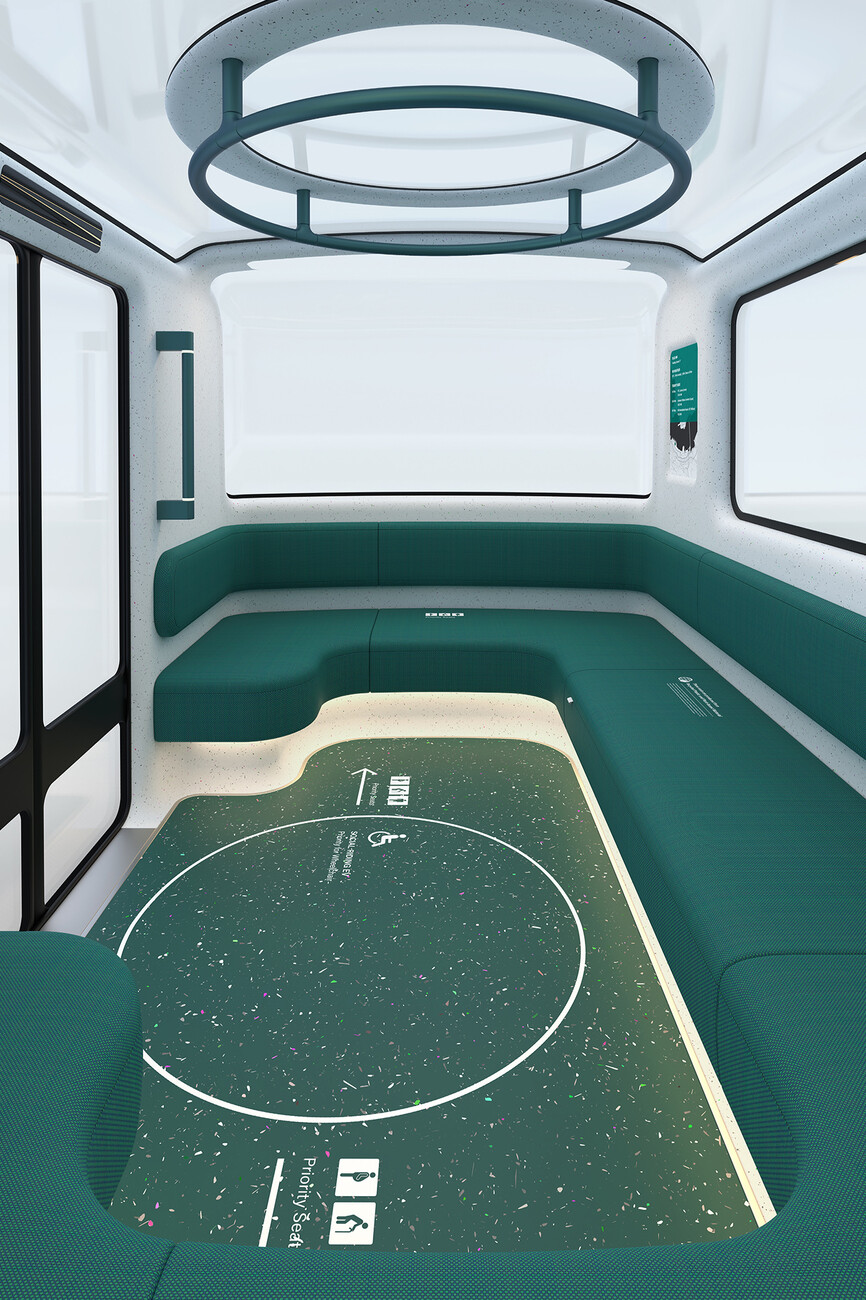MOBILITY
With the bus into the future
In ancient Greece, agora was the name given to places of events and gatherings. This is where people met to hold markets, celebrate festivals, and hold popular and judicial assemblies. In short, this is where life took place – politically, religiously, legally, commercially, athletically and artistically. Andrea Ponti is not Greek, but Italian. And he actually has more of a soft spot for Asia: the designer lived in Japan for seven years, after which he founded a design office in Hong Kong in 2013. It was there that he took a liking to modern locomotion. As early as 2020, he presented alternative means of transportation for his adopted Chinese homeland in the form of an emission-free passenger drone and a double-decker streetcar.
His latest concept vehicle is an autonomous, space-saving electric bus designed to help Hong Kong and the densely populated cities of southern China become more sustainable. And for this, he brings the ancient Greeks into play: "Agora E is inspired by the public assembly rooms of the ancient cities," Ponti says. What does that mean in concrete terms? Unlike conventional buses, the seats here are not arranged one behind the other, but in a ring around the center. This remains free and offers space for luggage, wheelchairs and standing passengers. By orienting the interior to the center of the passenger cell, which is designed to accommodate up to ten passengers, the designer wants to encourage interaction and conversation. Ponti's stated goal: "conversations and meaningful interactions."
The choice of fir green for the floor and upholstery is intended to create a calming atmosphere and convey the idea of sustainability. He implements this within the cabin with recycled and renewable materials. Ponti envisions the exterior space as a compact cuboid. In this way, he makes efficient use of urban and interior space. He envisions the sides, ceiling and sliding doors with large-scale glazing. They not only let natural light into the interior, but also allow "an unobstructed view of the iconic Hong Kong cityscape," according to the designer. Currently, Ponti is looking for allies to bring Agora E to the streets. Whether or not he succeeds, either way he's drawing attention to the neglected aspects of transportation: he's showing public transit is not only sustainable, but also social and perhaps even entertaining. Perhaps people will soon be brought closer together again in this bus of the future – based on the ancient model. (ncm)





















